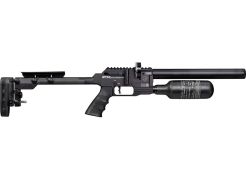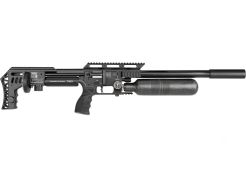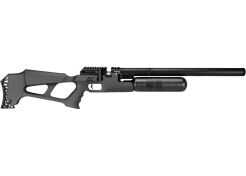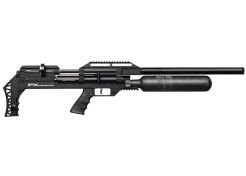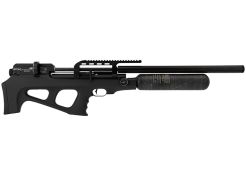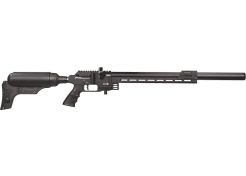All about air rifles: how does an air rifle work? Which type of pellets do I need?
Anyone who has never owned an air rifle before is likely to have plenty of questions. And even if you already have an air rifle at home, there is still much more to learn about them. We have gathered all this information on this page and the pages linked to it, so you can find everything you need to know about air rifles in a clear and structured way. Think of it as an air rifle wiki, full of reliable information. With this knowledge, you can be confident in making a well-informed choice when it comes to air rifles. And of course, it is also simply fascinating to read.
Transporting an air rifle
Another important rule to bear in mind is that, under law in many countries, an air rifle must be transported in such a way that it cannot be used immediately. Simply said: you are allowed to transport it, but it must not be ready for instant use. In practice, this means it must be properly secured in something.
Always transport an air rifle in a gun case. The principle of “not for immediate use” is best taken as seriously as possible, so avoid placing it on the passenger seat in your car; instead, keep it in the boot whenever you can. Needless to say, an air rifle must be unloaded during transport. And do not forget to carry proof of age, if that’s required in your country.
How does an air rifle work?
An air rifle is also known as an air gun, air-powered rifle, or PCP gun. The variety of names all point to one common element: air. By means of compressed air, a lead pellet is propelled through the barrel and outwards. The higher the air pressure, the faster the pellet will travel. This is expressed as power, measured in joules (J). In other words, the quicker the air builds up pressure, the higher the joule value and the more powerful the rifle becomes.
Apart from differences in power, the main technical distinctions between air rifles lie in their power source. Below is an overview of the most common power mechanisms, explaining how they work as well as their advantages and disadvantages.
What is a break barrel air rifle?
A break barrel air rifle is the most common type of air rifle. In this type, the barrel functions as the cocking lever for the spring or for the gas ram. The barrel is hinged and, when closed, locks into place. This may be a manual locking system, but more often it is a chamfered and/or rounded pin that falls into a recess under spring pressure. By applying force to the barrel, the pin slides away, allowing the barrel to be broken open.
By breaking the barrel open, you can insert a pellet (but best wait until the airgun is cocked). If you then continue to break the barrel further against the tension of the spring or gas ram, you are cocking the rifle. You push the barrel down until you hear the piston click into place in the trigger mechanism. You can clearly feel this when you bring the barrel back up. The tension is then released from the barrel.
It is important to know that if you do not feel any tension on the barrel of a break barrel air rifle, this means the rifle is already cocked and you must keep your finger away from the trigger until the barrel is closed again and aimed at the target. Storing a break barrel air rifle while cocked is, in fact, the main cause of power loss. The spring remains compressed for so long that it loses part of its ability to rebound.
Replacing an air rifle spring is something we do regularly. We have replacement springs in stock for almost all air rifles. If you wish to detune an air rifle, for example to bring it below the 16 joule limit of the Hunter Field Target (HFT) discipline, that is also possible. Replacing a spring in a lower-powered rifle can be done carefully by the owner, provided you keep in mind that the spring is under tension when released. You really must have a clear understanding of what you are doing, as a spring coming loose carries a lot of force and can be very dangerous. For this reason, we recommend having a spring replaced by an expert. For us, it is a routine job.
Returning to the break barrel: this is, as said, one method of cocking the spring or gas ram of your air rifle. There are, however, also fixed barrel air rifles in which the spring or gas ram is cocked using a separate cocking lever. This lever is often located beneath the barrel or the fore-end. Such a construction is known as an underlever air rifle. Another design is a sidelever air rifle, in which the cocking lever is positioned on the side. In both cases the lever is pulled backwards. The advantage of an underlever or sidelever air rifle is that the barrel remains solidly fixed to the action, meaning there is absolutely no play, which certainly benefits accuracy.
Air rifle with magazine
The time when every air rifle was a break barrel, where you had to load a pellet after each cocking, is long behind us. There are now plenty of air rifles with a magazine.
Although, with spring-powered and gas ram rifles, the majority still need to be loaded manually after cocking, there are also some rifles in this category that feature a magazine. These automatically index after each manual cocking movement. As a result, you can shoot a little faster, as it saves you an extra action.
Air rifles with magazines are more commonly found in PCP (compressed air) rifles and CO2 rifles. These do not need to be cocked, which makes the use of a magazine much more logical. Many air rifles with a magazine can be cycled very quickly with a bolt action, and there are even air rifles with magazines that operate semi-automatically. In fact, there are also a few fully automatic air rifles.
Which pellets?
Besides the power source, there is also the calibre to choose when buying an air rifle. The calibre is the internal diameter of the barrel, which means you need a pellet of the same diameter. The traditionally most common calibres are .177 and .22, but many other calibres are available. For example, there are the popular .25, .35 (9 mm), and even .50 calibres. Pellets for smaller calibres produce a flatter trajectory, while pellets for larger calibres are less affected by wind and deliver more impact. They also have a greater range. The more powerful the air rifle, the more the characteristics of the smaller calibres shift towards those of the larger calibres.
For instance, a .35 air rifle is often a very powerful rifle. Due to this power, the trajectory of a .35 pellet -quite a heavy piece of lead- is flatter. Allowing it to be shot over longer distances. The mass of a .35 pellet makes it considerably less susceptible to crosswind and air resistance than a small-calibre pellet. For this reason, a large calibre is often used for long-distance shooting. At short range, a smaller calibre is usually sufficient.
If you are mainly shooting in the garden or at paper targets, an extremely powerful large-calibre air rifle is unnecessary. In that case, .177 pellets are usually enough, and much less power is required. In fact, too much power can make them fly too fast and reduce accuracy. More information about .177 pellets, .22 pellets, and all other calibres can be found via the link below. On that page, we also explain the differences between various types of pellets, such as domed, flat, pointed, and hollow-point. A hint: flat pellets create neat holes without fraying on paper targets, domed pellets are the most accurate, followed by pointed pellets, while hollow-point pellets deliver the greatest impact.
Second-hand air rifle
Krale has long been known as the air rifle shop of the Netherlands. The range of air rifles for sale with us is immense. And we do not only sell new air rifles; you can also find a good second-hand air rifle here. This means that you will not only find the latest models with us, but also older examples that still perform excellently.
All second-hand air rifles are checked by our experts in the workshop and, if necessary, receive maintenance. It is reassuring to know that every used air rifle we sell has first passed through skilled hands.
A second-hand air rifle is a good way to start in the shooting sport relatively cheaply, but it is also perfect for progressing if you have a limited budget. The used air rifles that we offer as pre-owned, come from all segments: from beginner air rifles to pure competition rifles and everything in between.
Buying a second-hand air rifle from us means you know exactly what you are getting. Some used air rifles are virtually in new condition, while others may show signs of use. We always reflect this in the prices we offer for second-hand air rifles and in the classification we give them.
Anyone who keeps a close eye on our online shop, or follows us on social media, will notice that new air rifles do not have to be expensive with us either. In any case, we offer air rifles at competitive prices, and by buying in bulk, we are able to hold very attractive air rifle sales from time to time. During these sales, one or more air rifle models are offered at a very interesting discount while stocks last. We try to hold such air rifle sales several times a year.
Buying an air rifle
Buying an air rifle should be an enjoyable and, above all, a good experience. And most importantly: you should end up with the air rifle of your dreams. That is why our specialists always take as much time as possible for you. Whether you contact our customer service or visit our shop in the Netherlands, we do our very best to answer your questions as thoroughly and comprehensively as possible and to provide you with the best advice.
With the information on this page and on the pages you can click through to, you should already get a good idea of which air rifle suits you best. When the time comes to actually buy an air rifle, you may still be undecided between a few models. That is fine; the initial selection is easy, but the final choice between the last few is always the most difficult. Price is of course a factor when buying an air rifle, but the most important factor is whether the air rifle perfectly meets your requirements.
Buying an air rifle could be subject to restrictions. If you reside in the Netherlands, we are obliged to ask if you’re minimal 18 years of age. For this reason, you will be asked to provide identification to verify your age. If you buy an air rifle online (we ship air rifles to addresses both within the Netherlands and abroad), this is done by requesting an image of your identification to be uploaded. Rest assured; your privacy is protected. We only want to be able to verify your name and age. You may therefore cover other details, such as photo, social security number, and document number. Once we have verified the details, the copy is deleted from our system. If you don’t live in the Netherlands, it’s your own responsibility to comply to rules and regulations in your country.
Air rifle accessories
With just an air rifle and pellets, you often do not have everything you need. There is an enormous range of air rifle accessories available. Of course, you do not need them all, but many do offer real added value. The more you shoot, the more air rifle accessories you tend to accumulate. Many will make shooting easier or even improve performance, while others are simply very practical.
The eleven most commonly used air rifle accessories at a glance:







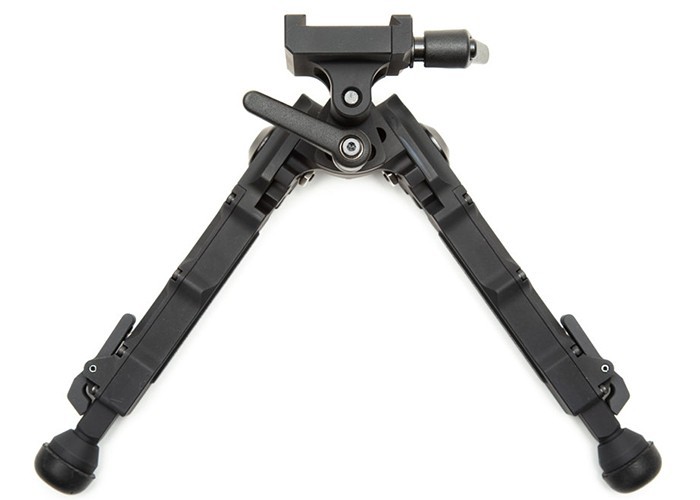
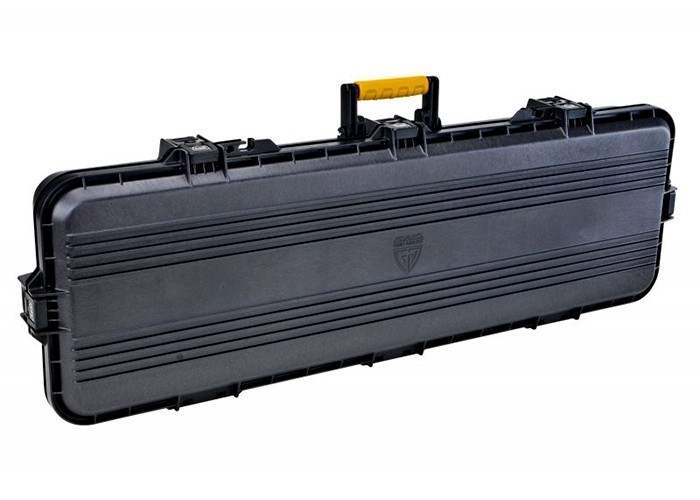
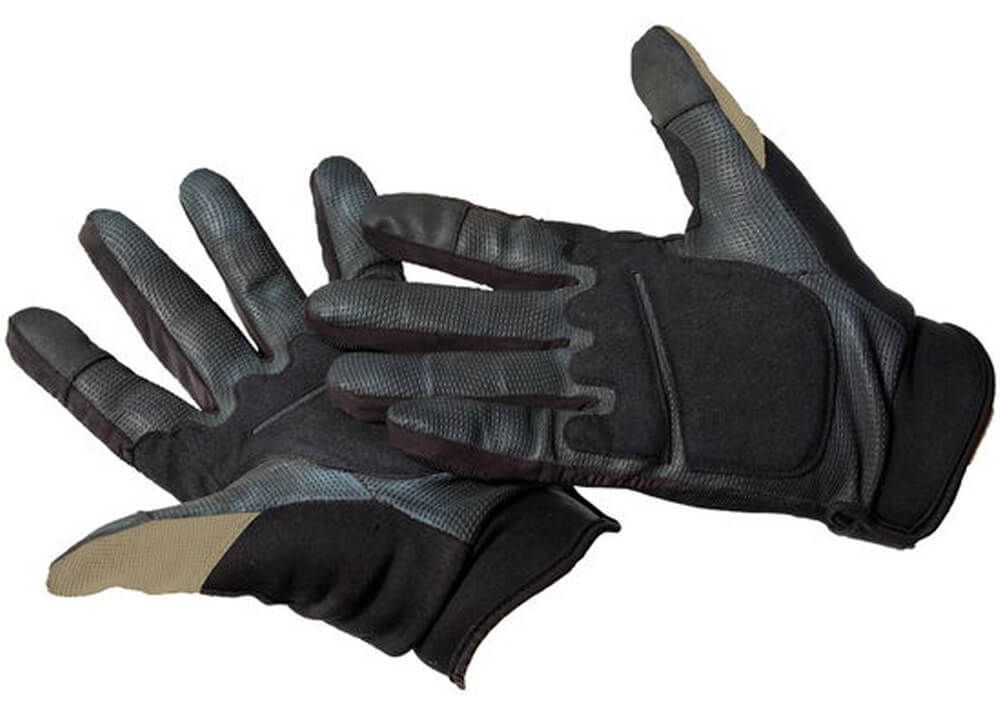

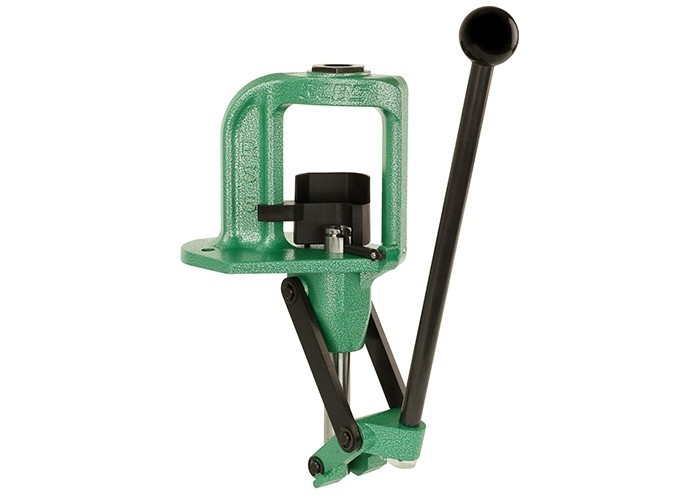





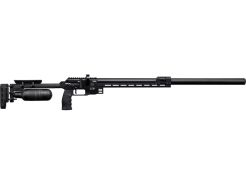
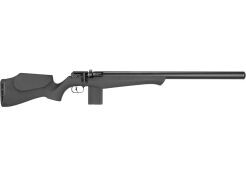

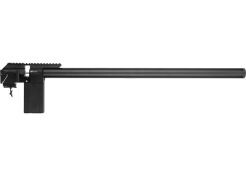
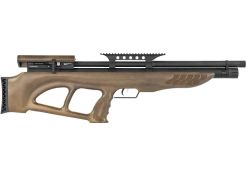
 Fast & secure delivery
Fast & secure delivery Secure shopping & payment
Secure shopping & payment Lots of expertise
Lots of expertise